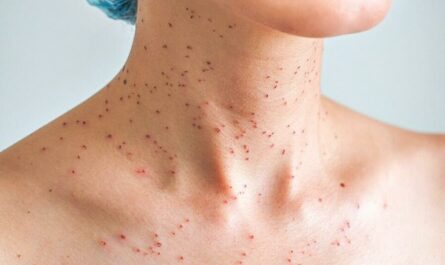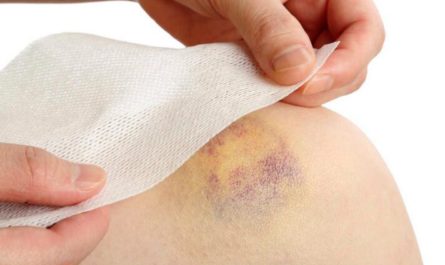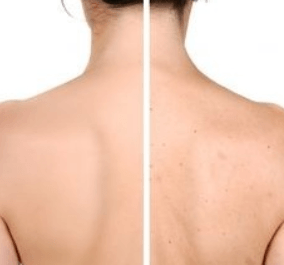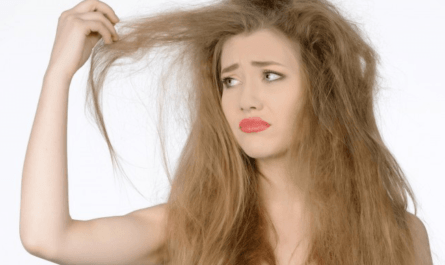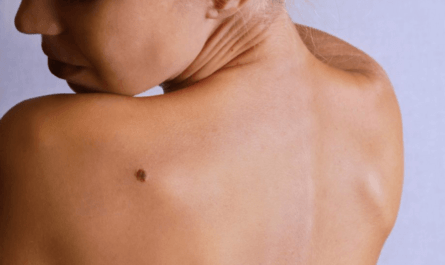If you’ve ever experienced the painful and stubborn breakouts associated with cystic acne, you know how challenging it can be to treat. Cystic acne is a severe form of acne that occurs when the pores become clogged with bacteria, oil, and dead skin cells. While seeking medical treatment from a dermatologist is often recommended, there are also natural remedies that can help alleviate symptoms and promote clearer, healthier skin. In this article, we will explore 14 effective natural remedies for getting rid of cystic acne.
What is Cystic Acne?
Cystic acne is large, red, exceedingly painful breakouts that develop deep inside the skin. It is medically termed nodulocystic acne or nodular cystic acne.
These swollen, tender lumps arise when oil glands (sebaceous glands) become clogged and infected by acne-causing bacteria called Propionibacterium acnes.
The pore swells up with a mixture of skin oils (sebum), dead skin cells, and bacteria – forming a painful cyst under the skin.
Unlike a pimple you can simply pop and drain, acne cysts are deeper infections that do not surface and open up on their own. A cyst consists of an inflamed pocket under the skin containing pus, sebum, keratin debris, and P. acnes bacteria.
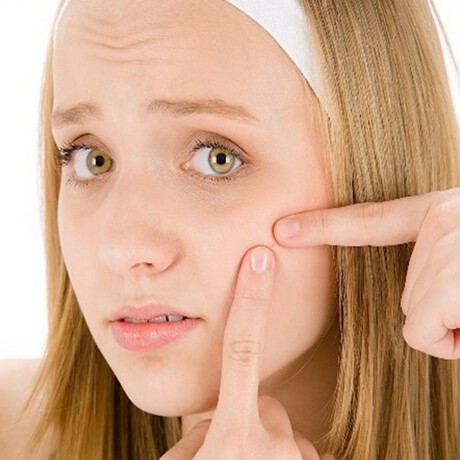
What Triggers Cystic Acne?
The exact causes are unknown but risk factors include:
- Family history – genetics
- Hormonal fluctuations during puberty, menstruation, pregnancy, and perimenopause
- High-stress levels
- Oily skin types
- Humid, tropical climates
- Friction from backpacks, helmets, tight collars
- Medications like corticosteroids, lithium, phenytoin
For some individuals, cystic acne persists from the teen years well into adulthood. The swollen, painful cysts most often occur along the jawline, cheeks, chin, back, chest, and upper arms.
Complications of Cystic Acne
Cystic acne is not just a superficial skin condition to take lightly. Left untreated, it can cause several medical complications:
Scarring – Manipulating or popping cysts yourself often worsens swelling and causes permanent, pitted scars. Scars frequently form after severe cysts along the face, back, chest, and shoulders.
Psychological effects – Dealing with painful cysts daily can negatively impact mood, self-confidence, and quality of life. Support groups, therapy, and self-care help cope.
Infection – In rare cases, bacteria trapped within an acne cyst enter the deeper skin layers or bloodstream. This results in cellulitis, abscesses, or sepsis needing urgent care.
Dark spots – After a severe cyst heals, brown or red spots often remain for weeks to months. Diligent skin care helps prevent this post-inflammatory hyperpigmentation.
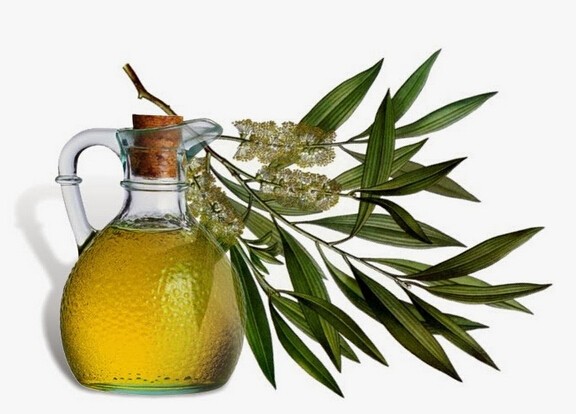
14 Natural Remedies to Get Rid of Cystic Acne
1. Light & Laser Therapy
Exposing skin to blue wavelengths of light is emerging as an effective treatment approach for inflammatory cystic acne:
Blue light therapy uses narrow spectrum 405-420 nm blue LED light to help kill acne bacteria nesting deep in the pores. Blue light reaches the sebaceous glands, exhibiting antimicrobial actions against P. acnes.
Professional blue light treatments performed 1-2 times weekly alongside medication therapy have been shown to reduce cystic acne lesions. At-home blue light masks are now available as well but at lower intensity than in-office devices.
Photodynamic therapy (PDT) uses a photosensitizing agent like aminolevulinic acid followed by exposure to blue light. The photosensitizer binds to P. acnes bacteria and produces free radicals upon light activation, killing bacteria.
Studies demonstrate photodynamic therapy reduces inflammatory acne, performing best against severe acne. It carries a risk of temporary redness and peeling.
Pulsed dye lasers emit yellow light targeting the red color in acne inflammation. By constricting blood vessels, pulsed dye lasers tone down the redness and swelling of inflammatory acne. Multiple treatments are required but some reduction in acne lesions occurs.
2. Tea Tree Oil
Tea tree oil is one of the most widely used natural remedies for acne breakouts. The potency comes from its antimicrobial and anti-inflammatory terpenes:
Antimicrobial actions – Terpenes like terpinene-4-ol exhibit antibacterial activity against P. acnes as well as many other bacterial and fungal species. Test tube studies demonstrate tea tree oil’s ability to kill acne-causing bacteria.
Anti-inflammatory effects – The terpene alpha-terpineol has been shown to suppress inflammatory cytokines produced by white blood cells and cut back excessive inflammation.
These antimicrobial and anti-inflammatory properties make tea tree oil a promising natural cystic acne remedy. Look for a 5% tea tree oil spot treatment and apply it to breakouts twice daily after gently cleansing the skin. Limit use to small areas as pure oil can irritate skin.
3. Turmeric
The golden spice turmeric has been used for centuries in Ayurvedic and Chinese medicine for its antimicrobial, anti-inflammatory, and wound-healing benefits. The active curcuminoid provides therapeutic effects against cystic acne:
Antimicrobial – Test tube studies demonstrate curcumin exhibits antibacterial activity against P. acnes strains by damaging bacterial cell walls.
Anti-inflammatory – Curcumin blocks inflammatory cytokines like tumor necrosis factor-alpha (TNF-α). Excess TNF-α has been found in cystic acne lesions.
Skin healing – Curcumin stimulates tissue remodeling enzymes like MMP-2 to help resolve scarring and speed wound closure.
With its multi-pronged therapeutic effects, turmeric shows promise as an adjunct treatment for reducing cystic acne. Create a paste mixing turmeric powder with honey or yogurt. Apply to breakouts twice daily, leaving on for 30 minutes before washing off. Turmeric stains fabric so use an old T-shirt.
4. Green Tea
Sipping cups of green tea not only provides antioxidant benefits internally but also exerts protective effects when applied topically to skin diseases like acne. Components in green tea called polyphenols drive the effects:
Antimicrobial – The polyphenol EGCG (epigallocatechin gallate) demonstrates antibacterial actions against P. acnes bacteria. It may work synergistically with benzoyl peroxide against acne.
Anti-inflammatory activity – Green tea polyphenols like EGCG block inflammatory molecules like leukotriene B4 and prostaglandin E2 which are elevated in acne.
Antioxidant protection – Powerful polyphenols fight free radicals and oxidative damage to skin cells provoked by inflammation in cystic acne.
Brew organic green tea using filtered water. Allow tea bags or leaves to steep for 5 minutes. Remove the tea bags and let the liquid cool completely. Soak a soft washcloth in the tea liquid. Apply as a compress to swollen cystic acne breakouts for 10 minutes to reduce redness and inflammation. You can drink 2-3 cups of green tea daily as well.
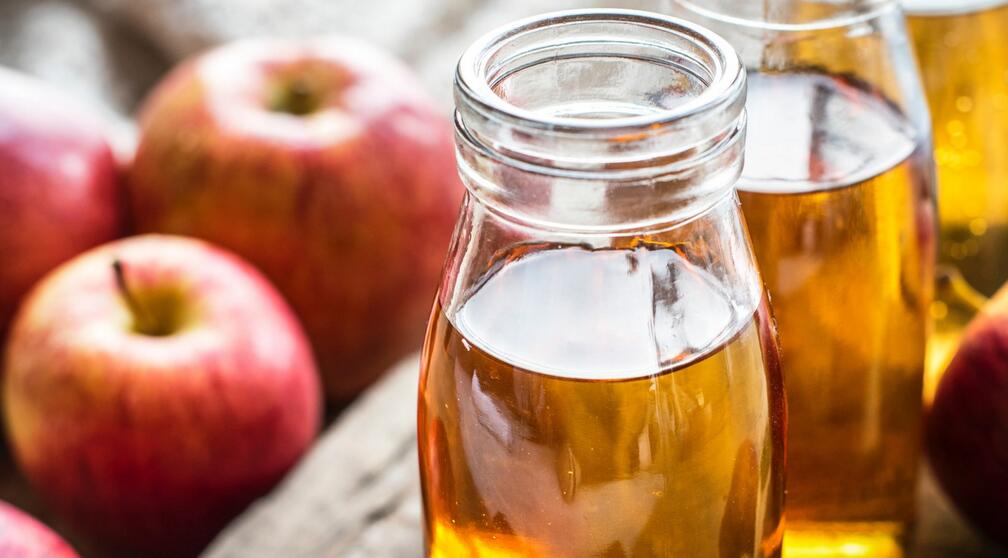
5. Apple Cider Vinegar
Apple cider vinegar is a cherished natural remedy for all types of skin ailments and acne is no exception. The organic acids provide therapeutic effects:
Antimicrobial activity – Vinegar’s key ingredient acetic acid demonstrates antibacterial properties against P. acnes at a 5% concentration, with test tube studies showing reduced P. acnes viability and inhibited growth.
Keratolytic action – Acetic acid removes dead skin cells through gentle chemical exfoliation, preventing pore blockages. The malic acid in vinegar may assist with this as well.
pH balancing – Apple cider vinegar creates a slightly acidic environment on the skin. The bacteria prefer a pH between 5.2 and 5.9. Bringing skin pH down below 5 may discourage acne bacteria proliferation.
Dilute organic, unfiltered apple cider vinegar with purified water in a 1:3 ratio. Apply this solution to cystic acne using a cotton pad, allowing it to sit for 2-3 minutes before rinsing. Limit use to once daily as vinegar may irritate sensitive skin.
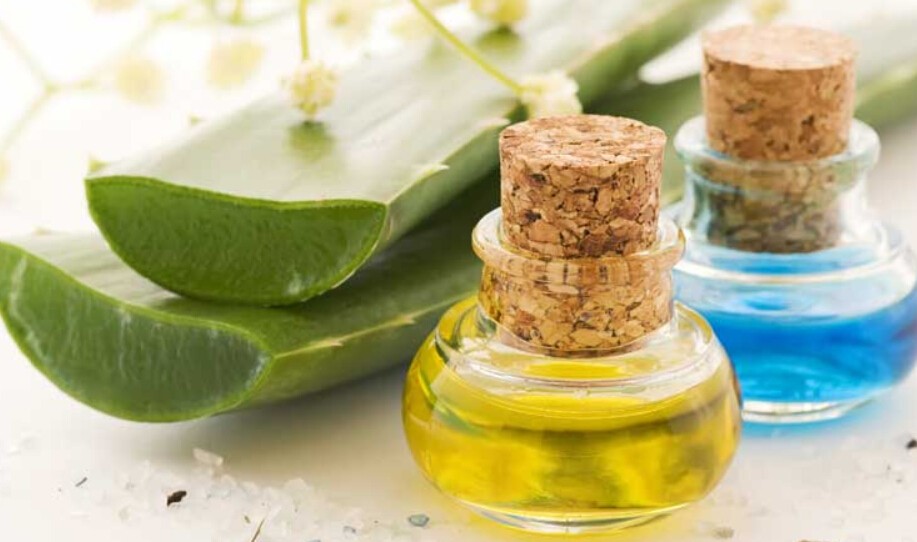
6. Aloe Vera Gel
Aloe vera gel is renowned for its skin-soothing and healing properties. Both oral intake and topical application may help alleviate inflammatory cystic acne:
Anti-inflammatory effects – Oral aloe vera gel significantly reduces skin inflammation by lowering inflammatory mediators like IL-6, IL-8, TNF-α, and COX-2 enzymes.
Antimicrobial actions – Aloe extracts demonstrate antimicrobial activity against P. acnes in lab studies. They may also help prevent secondary bacterial infection of acne lesions when applied topically.
Skin healing – Aloe stimulates skin remodeling enzymes like collagenase and hyaluronidase leading to faster wound closure with minimal scarring.
Look for pure inner leaf aloe vera gel products. Apply a thin layer to cystic acne breakouts twice daily after cleansing to reduce redness and inflammation while accelerating healing.
7. Probiotics
Oral probiotic supplements support healthy gut flora, which in turn benefits the gut-skin axis. Restoring microbiome balance influences inflammatory skin conditions like cystic acne:
Reduce skin inflammation – Probiotics like lactobacilli and bifidobacteria decrease inflammatory cytokines and skin infiltration of inflammatory immune cells. They counter the systemic inflammation that triggers acne.
Modulate gut-skin pathways – Multiple pathways exist between gut microbes and skin including the gut-brain-skin axis involving substance P signaling. Probiotics beneficially modulate these pathways.
Improve insulin sensitivity – Probiotics improve markers of insulin sensitivity like fasting blood glucose and insulin levels. This provides an acne-protective effect as IR and hyperinsulinemia exacerbate acne.
Consume a diverse array of probiotic foods like yogurt, kefir, kimchi, sauerkraut, pickles, miso, kombucha, and tempeh. A daily spore-based probiotic supplement boosts diversity further. Improving gut health and microbiome diversity takes time but pays off by dialing back inflammatory acne.
8. Zinc
Oral zinc supplements like zinc gluconate help modulate inflammatory acne when taken correctly under medical guidance:
Hormonal regulation – Zinc reduces androgen hormone activity in the skin, lowering sebum production. Excess androgens drive increased sebum that gets trapped within clogged follicles.
Anti-inflammatory effects – Zinc inhibits the release of inflammatory cytokines like IL-6 and TNF-α from white blood cells. It also boosts tissue levels of A20 proteins that control inflammatory signaling.
Immune modulation – Zinc balances immune cell activity – decreasing inflammatory neutrophils while raising protective T-reg cells. This helps resolve excessive inflammation.
A standard acne treatment dose is 30-50 mg of elemental zinc daily. This is lower than the tolerable upper limit but high enough to provide therapeutic effects. Take zinc with food to prevent stomach upset. Use for 12 weeks then cycle off for a few months to prevent deficiency in copper or other minerals.
9. Stress Relief
Psychological stress significantly impacts acne severity by altering hormone balance and ramping up inflammatory pathways:
Hormonal effects – Stress hormones like cortisol and CRH drive increased androgen production from the adrenals and ovaries. CRH also directly stimulates sebaceous glands, causing more sebum output.
Inflammatory effects – Stress hormones like cortisol and neuropeptides like substance P increase inflammatory molecules like IL-6, IL-8, TNF-α, and TLR-2 receptors that provoke inflammatory acne.
Microbiome disruption – Stress disturbs healthy gut flora balance, increasing colonization by inflammatory species. This contributes to the systemic inflammation triggering acne.
Relaxation techniques like meditation, yoga, deep breathing, and massage therapy help break this cycle by lowering stress hormone levels and associated inflammation. By managing stress, you allow holistic and conventional acne treatments to work optimally.
10. Anti-Inflammatory Nutrition
Dietary measures help counterbalance hormone shifts, inflammation cascades, and insulin spikes contributing to acne cysts. By stabilizing these drivers, an anti-inflammatory diet complements conventional cystic acne care:
Omega-3 fatty acids – Increasing intake of EPA/DHA omega-3s from salmon, mackerel, sardines, herring, anchovies, trout, tuna, and supplements helps resolve inflammatory cystic acne by blocking leukotriene B4.
High antioxidant foods – Loading up on colorful fruits, vegetables, herbs, spices, tea and even dark chocolate provides free radical scavenging antioxidants that reduce oxidative damage from acne inflammation.
Anti-inflammatory spices – Herbs like turmeric, ginger, rosemary, garlic, cumin, clove, and oregano contain potent plant compounds that inhibit inflammatory molecules like NF-kB and TNF-α.
Shifting to an anti-inflammatory, whole-food diet based on plants counters multiple drivers of cystic acne – hormones, inflammation, insulin, and gut health – while optimizing nutrient intake for improved treatment outcomes.
11. Exercise & Sweating
Working up a light sweat from regular exercise provides surprising benefits against cystic acne:
Hormonal effects – Exercise lowers androgen hormone activity from the ovaries and adrenal glands. This reduces sebum output from overactive oil glands that contribute to clogged pores and acne.
Insulin sensitivity – Exercise makes cells more responsive to insulin. This lowers blood insulin levels that would otherwise spur androgen-mediated sebum production.
Anti-inflammatory effects – Working out muscles releases myokines which counterbalance inflammatory cytokines involved in acne. IL-6 levels notably decrease after exercise.
Skin blood flow – Exercise increases blood circulation to the skin, delivering immune cells, nutrients, and oxygen to help heal inflamed cystic acne lesions faster.
Aim for 30-60 minutes of exercise like brisk walking, jogging, cycling, swimming, or strength training 3-4 days a week. Be sure to shower after sweating to prevent pore-clogging.
12. Evening Primrose Oil
Evening primrose oil (EPO) supplements provide anti-inflammatory omega-6 fatty acids that exhibit therapeutic effects:
Inflammatory mediation – EPO contains high concentrations of gamma-linolenic acid (GLA) which helps modulate inflammatory prostaglandin pathways implicated in cystic acne including the COX and LOX pathways.
Hormone regulation – GLA may assist with regulating hormonal fluctuations contributing to acne in women by helping correct deficiencies in progesterone and possibly testosterone.
Insulin sensitivityHere are three more natural remedies to help get rid of cystic acne:
13. High Fiber Foods
Fiber from whole plant foods promotes the elimination of waste and toxins from the body. This prevents clogged pores and acne cysts brewing under the skin:
Promotes elimination – Soluble fiber from oats, nuts, seeds, lentils, apples, and citrus absorbs water to form a gel-like bulk that keeps waste moving smoothly through the intestines.
Prebiotic effects – Fiber feeds healthy gut bacteria species like Bifidobacterium and Lactobacillus, restoring microbiome balance. This counters inflammation.
Lowers androgens – Increased fiber intake is associated with decreased circulating androgens like DHEA sulfate and testosterone that drive excess sebum production in acne.
Aim for 25-40 grams of fiber daily from whole grains, fruits, vegetables, nuts, and seeds to prevent acne-provoking gut issues.
14. Detoxifying Foods
Eating specific foods aids liver detoxification and waste clearance from the body. Optimizing liver function ensures hormones, toxins, and excess sebum do not accumulate and trigger cystic acne:
Cruciferous vegetables – Broccoli, Brussels sprouts, kale, and cabbage contain glucosinolates which support Phase 1 liver detoxification of hormones and chemicals that aggravate acne.
Leafy greens – Spinach, arugula, and watercress provide folate needed for recycling glutathione – the body’s master antioxidant and liver detoxifier.
Garlic & onion – Sulfur-containing amino acids support glutathione production and liver detox enzymes.
Berries & citrus – Flavonoids like quercetin boost glutathione levels while vitamin C recycles other antioxidants.
When should You consult a dermatologist?
You should consult a dermatologist for cystic acne under various circumstances, including:
- Severe Symptoms: If you have cystic acne with large, painful, and deep cysts that are causing significant pain, inflammation, and scarring.
- Persistent Acne: When over-the-counter acne treatments haven’t provided relief or if your cystic acne keeps returning.
- Risk of Scarring: If you’re concerned about scarring, cystic acne is more likely to leave permanent scars.
- Emotional Impact: If your cystic acne is affecting your self-esteem, causing emotional distress, or impacting your daily life.
- Systemic Symptoms: If you experience unusual symptoms such as fever, fatigue, or a general feeling of being unwell in conjunction with your cystic acne.
- Pregnancy or Nursing: If you are pregnant or nursing, the treatment options for cystic acne may need to be adjusted to ensure safety.
Cystic acne is a serious skin condition that can significantly impact a person’s self-esteem and quality of life. If you suspect you have cystic acne, it’s important to seek the advice of a dermatologist or healthcare professional.

